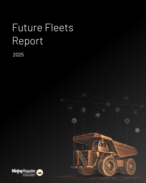Australia’s commodities forecaster predicts global thermal coal demand will sink by 2% to 690 million tonnes for 2009, but then grow 6% from this level to 730Mt next year.
Japan’s thermal coal imports are tipped to continue to fall as the country returns to nuclear power generation, with ABARE estimating around 70% of available capacity was used in August.
Total imports in the land of the rising sun are forecast to dip by 10% to 115Mt for 2009 and ABARE expects imports to remain at this level for 2010.
South Korea has commissioned new coal-fired power plants this year, with the country’s thermal coal imports estimated to lift 7% to 81Mt in 2009 and to grow another 3% to 83Mt in 2010.
As the European Union has been dealt a greater blow by the economic downturn, ABARE has forecast total thermal coal imports to fall 4% to 176Mt in 2009.
On the assumption of a gradual recovery, the forecaster predicts the region’s imports to increase 3% to 182Mt next year.
China has been the shining light of bulk commodities demand in credit crunched 2009, with ABARE expecting the country’s thermal coal imports to reach 60Mt this year, an increase of 69% from 2008.
For the first half of 2009, China imported 35Mt of thermal coal – the same amount imported for the whole of 2008.
While factoring in higher domestic production, ABARE has forecast China’s imports to grow another 8% to 65Mt in 2010.
India’s future thermal coal demand has received a lot of attention, and ABARE took note of a July announcement by the Indian government that only 70% of the planned 14.5 gigawatts of new coal-fired electricity capacity would be added during the 2009-2010 financial year because of coal shortages.
The developing nation’s imports are forecast to rise 24% to 42Mt in 2009 and grow another 19% to 50Mt in 2010.
On the supply side, ABARE expects Australia to increase production by 4% to 213Mt in the current financial year, as the Moolarben and Narrabri mines start up and New Acland goes through another ramp-up.
Australian thermal coal exports are tipped to rise 3% to 140Mt as capacity at Newcastle’s port is increased.
Given a 44% slide year-on-year in contract prices, ABARE expects actual Australian export earnings from thermal coal to plummet 38% to $A11.1 billion.
Leading thermal coal producer Indonesia is projected to increase exports by 6% to 205Mt in 2009 and another 2% to 210Mt in 2010 on the back of Chinese, Korean and Indian demand.
Exports from Colombia are expected to fall 5% to 70Mt this year and to increase 6% to 74Mt in 2010 on the back of a recovery in the Atlantic market.
Metallurgical coal
The global steel slump has ABARE forecasting a 12% fall in the world metallurgical coal trade to 207Mt in 2009, and a slight recovery of 3% to 212Mt in 2010.
In a more conservative estimate than BHP Billiton’s prediction of 30Mt and Macquarie’s call of 29Mt, ABARE has forecast China to import 27Mt of metallurgical coal this year, still an increase of 286% over 2008.
While China’s unprecedented demand for the commodity has helped stave off further production cuts and pain for Australia’s coal industry, ABARE pointed out that the forecast level of Chinese imports would only account for 13% of world imports in 2009.
ABARE expects traditional metallurgical coal importers, such as Japan, South Korea and the European Union, to increase imports by 7% in 2010 as the steel market recovers.
Looking at supply, Australia’s met coal exports are tipped to reach 126Mt in 2010, not much better than the 125Mt forecast for 2009, while US exports of the commodity are expected to remain flat at 29Mt for both annual periods.
In 2010, Russian met coal exports are expected to grow by 2Mt to 20Mt and Canada’s exports to increase by the same amount to 24Mt.
While Australia’s met coal exports are estimated to be 7% down on 2008, ABARE expects actual 2009 export earnings to sink 50% to $18 billion because of the 57-62% falls in contract prices.
Overall Australian outlook
Looking at the bigger picture for all energy and minerals, export earnings are forecast to fall by 23% to $123 billion, mainly as a result of lower contract prices for bulk commodities, including coal and iron ore.
“At a forecast $123 billion, minerals and energy export earnings in 2009-10 will be the second highest on record,” executive director of ABARE Terry Sheales said.
In total, Australian commodity exports are predicted to rake in $158.31 billion, down by 20% thanks to a global decline in commodity prices.
ABARE raised its forecast for the Australian dollar, putting it at US83c in 2009-2010, up from an earlier prediction of 77c.
Economic activity has picked up in China and emerging Asian economies and is expected to strengthen in the next few quarters.
“In recent months, tentative signs have emerged that world economic activity may have stabilised, with international trade and global industrial production expanding modestly following large declines earlier in the year,” ABARE said.
























